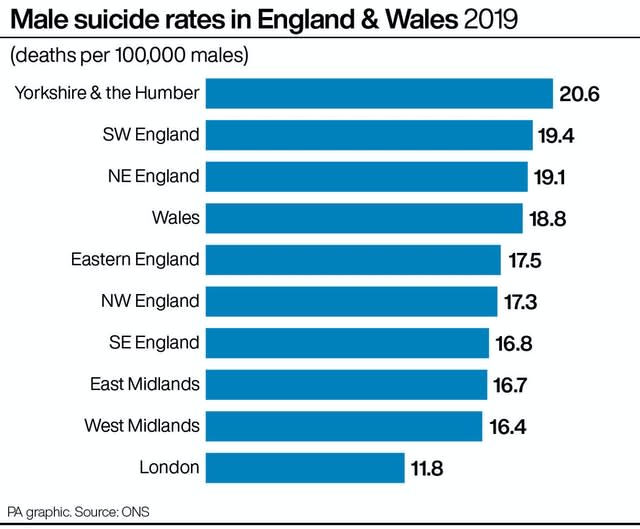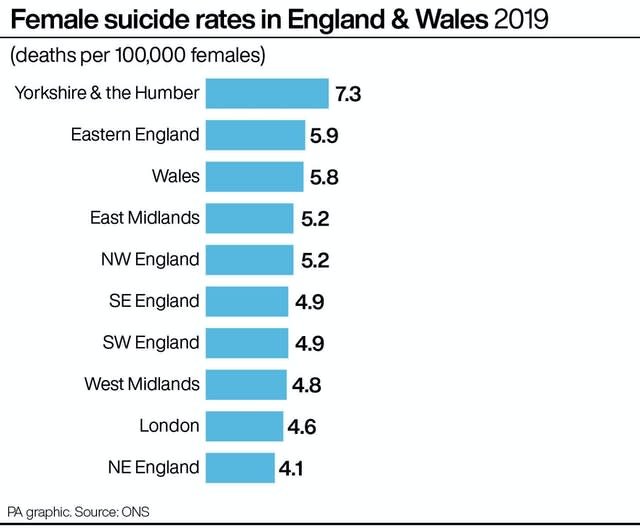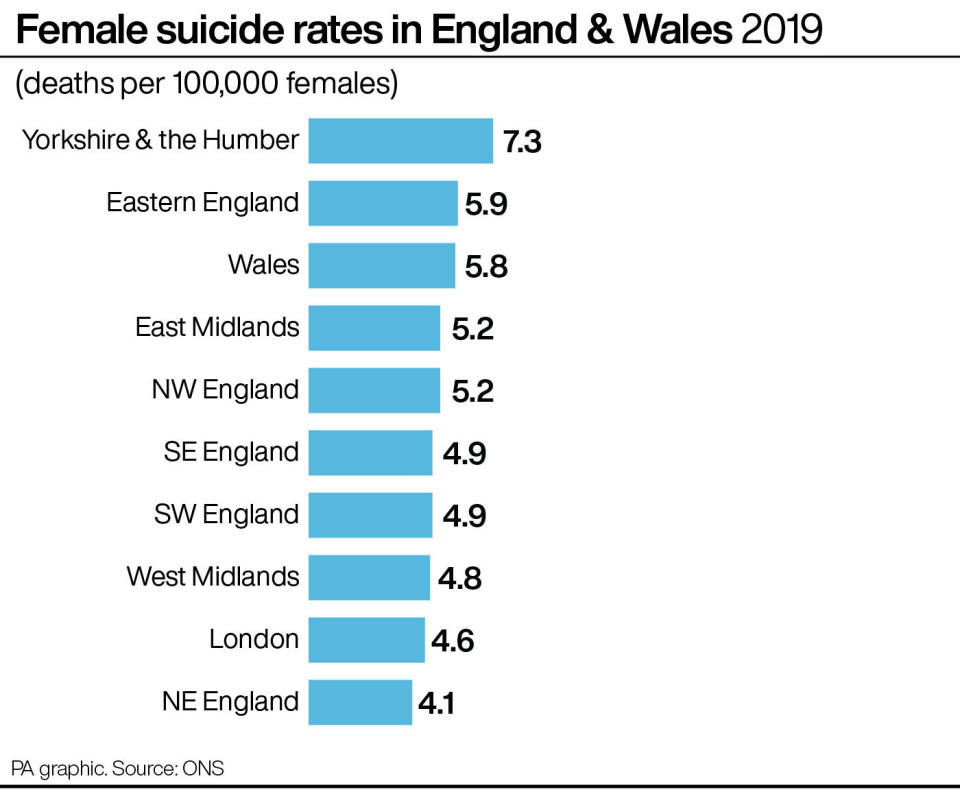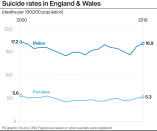Male suicide rate highest for two decades, new data shows
The suicide rate for men in England and Wales in 2019 was the highest for two decades, official figures show.
New data from the Office for National Statistics (ONS), published on Tuesday, found 5,691 suicides were registered in England and Wales in 2019, with an age-standardised rate of 11 deaths per 100,000 population.
The ONS said men accounted for around three-quarters of suicide deaths registered in 2019 – 4,303 compared with 1,388 women.

The England and Wales male suicide rate of 16.9 deaths per 100,000 was the highest since 2000 but remained in line with the 2018 rate, it added.
Men aged 45 to 49 had the highest age-specific suicide rate at 25.5 deaths per 100,000 males.
The ONS said higher rates of suicide among middle-aged men might be due to economic hardship, isolation and alcoholism, with men in this category also less likely to seek help.
The data also showed the suicide rate for women in England and Wales was 5.3 deaths per 100,000, the highest since 2004.
It found that the rate among females aged 10 to 24 had also increased “significantly” from 1.6 deaths per 100,000 (81 deaths) in 2012 to its highest level at 3.1 deaths per 100,000 females (159 deaths) in that age group in 2019.
The area with the highest rate in 2019 was Yorkshire and the Humber at 20.6 per 100,000 for men and 7.3 per 100,000 for women.

The male suicide rate in the South East increased “significantly” from 13.5 per 100,000 (526 deaths) in 2018 to 16.8 per 100,000 (657 deaths) in 2019, the ONS said.
Labour’s shadow mental health minister, Dr Rosena Allin-Khan, said the figures “must be a wake-up call for the Government”.
She added: “This worrying upward trend in England highlights the importance of taking suicide and mental ill health seriously.”
The LGA said the forthcoming spending review provided an opportunity for “much needed investment” in council services to reduce and prevent suicide.
Ian Hudspeth, chairman of its Community Wellbeing Board, added: “Every suicide is a tragedy and it is worrying that we continue to see particularly high rates among males and in certain age groups, including a long-term increase in under-25s generally.”
Provisional data, also published by the ONS, showed that there were 6.9 suicide deaths per 100,000 people in England between April and June this year – during the peak of the coronavirus pandemic.
This was the equivalent of 845 registered deaths, the lowest of any quarter since 2001, the ONS added.
But the ONS said the low number of suicide deaths registered during this period was probably due to inquests being delayed because of the Covid-19 outbreak.
It added: “The lower number of deaths registered caused by suicide in quarter two of 2020 should be interpreted with caution; this likely reflects delays to inquests because of the impact of the coronavirus (Covid-19) pandemic on the coroner’s service.
“All deaths caused by suicide in England are investigated by coroners.
“Given the length of time it takes to hold an inquest (around five months), we do not currently know the total number of suicides that occurred during the coronavirus (Covid-19) pandemic.”

Samaritans chief executive Ruth Sutherland said the charity’s research has shown that callers to its services were more anxious and distressed than before the pandemic.
She added: “It is not inevitable that suicide rates will go up as a result of coronavirus, but we know that the pandemic is impacting on lots of people’s lives and exacerbating some known risk factors for suicide for some people who are already vulnerable.
“Volunteers are telling us that many callers have been worried about losing their job and/or business and their finances, with common themes around not being able pay rent/mortgage, inability to support the family, and fear of homelessness.
“Undoubtedly, the pandemic has affected everyone in society, but Samaritans is particularly worried about three groups: people with pre-existing mental health conditions, young people who self-harm, and less well-off middle-aged men.
“It is essential that these groups are given the support they need before people reach crisis point.
“Suicide prevention must be a priority right now, so we can save lives.”

 Yahoo Finance
Yahoo Finance 









